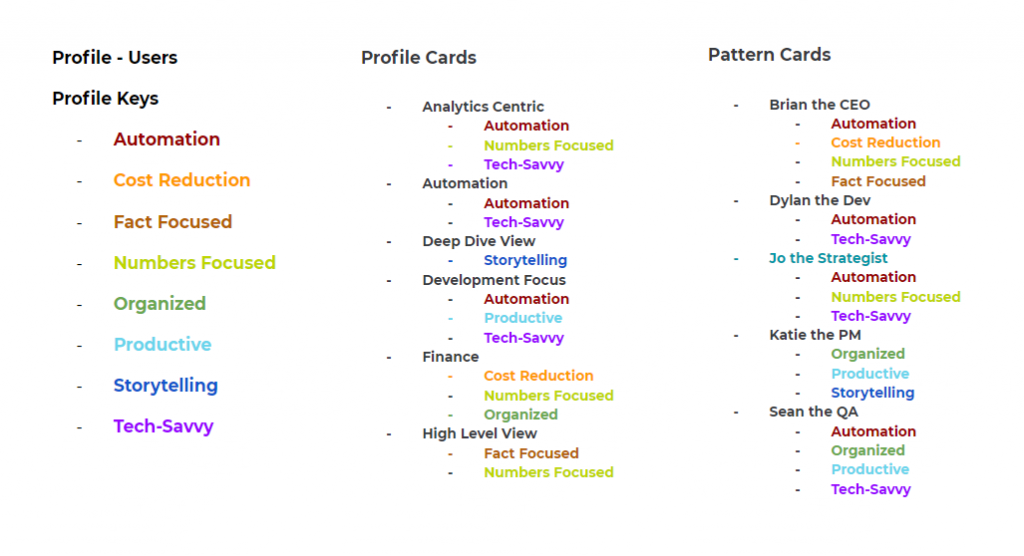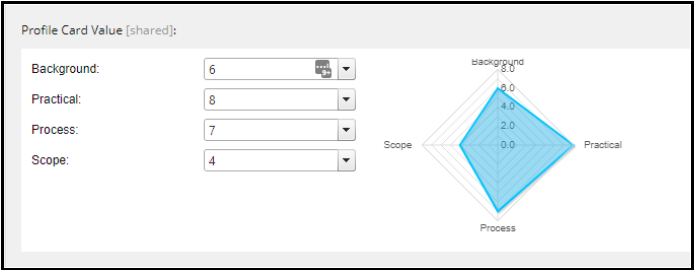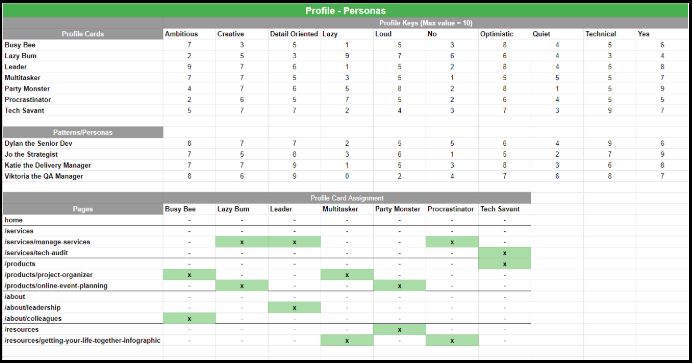If you have worked in a marketing-like capacity and used Sitecore as your content management system(CMS), chances are the words Profile, Profile Key, Profile Card, Pattern Card or Persona have been tossed around. As personalization is becoming less of a nice-to-have and more of an expectation, marketers are looking for ways to increase conversions, lower bounce rates and provide users the content they want more easily. These P words are like the soul stone of infinity stones for digital marketers (I am still speechless over Avengers: Endgame!).
When I started working with Sitecore’s marketing functionality and after going to the Sitecore Marketer training, the concept of profiles, profile cards and so on was still a bit of a mystery to me. The setup of the profile and then the relationship between the keys and the profile cards and pattern cards just seemed extremely complex and made my head spin. Over time and giving trainings on the topic, how each is defined, the use and the relationship between these different Sitecore items, things became clearer.
So to help someone else who might be struggling with this area of the Sitecore Marketing Control Panel and to test my own knowledge, let’s explore the in’s and out’s of Sitecore profiling!
The What
To begin, defining all the pieces seems like a logical first step! This seemed pretty easy to grasp but to err on the side of caution, we will go over each with my own personal definitions.
Profile – The overarching category folder. When trying to determine the categories for a profile, start with basic categories. If you’re an IT company, a potential profile could be products, another could be functionality or pain points. The profile item within Sitecore itself is just for categorization so if it is named one way and after building out the subitems, things seem off, the name can be changed!
Profile Key – A characteristic or attribute that can be used to describe a part or the whole of the content or user on your site. These characteristics could be adjectives like “tech-savvy” or “numbers-focused”.
Profile Card – An item created made up of Profile Keys used to tag pages within the content tree. A profile card has a score associated to it and as users consume content that is tagged with a profile card ,they start to accumulate points towards that card as something they are interested in
Pattern Card – An item created made up of Profile Keys used to match or segment visitors. With pattern cards, you set a threshold in values and as site visitors consume content tagged with profile cards, once they match the defined threshold, they have now matched a pattern you can personalize to.
Below is a visual example to put this all together. We have a Profile of Users and then use characteristics as Profile Keys to describe both the content (Profile Cards) and the users (Pattern Cards) who frequent the site. For the “Jo the Strategist” Pattern Card, Profile Keys associated are Automation, Numbers Focused and Tech-Savvy. While other patterns may share the same Profile Keys, the values are different. More on this in “The How”!

It’s like a Profile/Persona rainbow! Disclaimer: These are not the best options ever for Profile Keys, Cards and so on but it’s not using the “cars” example (wink wink to seasoned Sitecore marketers) and is just to provide an idea of how this could be set up!
Does that clear up all the questions you have about this topic? Probably not… but defining these terms is essential to understanding the next part.
The How
Firstly, one choice that needs to be made is “Will this be a 1-to-1 relationship or a 1-to-many relationship?”.
What I mean by 1-to-1 relationship versus a 1-to-many relationship is how the Profile Keys are used in relation to Profile Cards and Pattern Cards since both are, as we defined above, made up of Profile Keys or more specifically their values.
When creating a Profile Key, a name as well as a minimum and maximum value is required. The value can be 0-2, 0-10, 1-10, whatever range you feel has enough statistical variation for the profile being created, the content being tagged and the visitors coming to your site. Once a minimum and maximum value is set and profile and pattern cards are being created, a card value needs to be set.
Both Profile and Pattern Cards have fields for a value which shows a spider web-like graphic with all of the different Profile Keys created and a dropdown scale to set a value within the Profile Key min/max range.

So now back to relationships:
1-to-1 relationship – If your segments are narrow then the characteristics created for your profile keys might be exactly what would be used to describe your content and users. In this case, a profile key could be “Young Adults” and if there is content specifically targeted to this group, the profile card could be “Young Adults” or “Young Adult Focused” and then the pattern or persona for the audience might be “Young Adults”.
1-to-many relationship – Where your segments of users and content are broad meaning there are multiple characteristics to classify your content and users. An example could be a profile key for “Technical” documentation, a profile card of “Development” and one pattern card/persona to match “Dylan the Developer” and a different profile card of “Analytics” with a pattern card for “Brian the Web Analytics Master”. Both are positions where technical skills are potentially characteristic of the content and visitor so other profile key characteristics would be used to differentiate content and users.
For the purposes of trying to explain these relationships, I have created an example of a 1-to-many relationship:

In this example, there are profile keys to describe characteristics of the content and visitors and then profile and pattern cards for the different types of content and visitors using the profile keys either 100% or a mixture of multiple profile keys to one profile or pattern card. Including a listing of pages with the mapped profile card assignment can be useful because then you can easily map out the paths to match on a specific pattern to test the setup.
Once a profile, profile keys, profile and pattern cards are defined on paper/spreadsheet, it is just a matter of creating the Sitecore items, tagging content, testing and then sitting back and waiting for the data to come rolling in to eventually begin to personalize content based on these personas.
Are your eyes glazing over yet? No? Yay!
Well, if your eyes did glaze over and you are still curious about patterns, profile cards and so on or know some other analogy or way to explain this, without using cars ;-), or have questions about the post, submit a comment below, submit the contact form or you can always message me on LinkedIn or Twitter @sitecorejo!
And for those located in Florida and the Tampa Bay area, check out the Florida Sitecore User Group and join us at the meetings. Check out the events and stay up-to-date on Twitter @FloridaSitecore!
Jo Troxell will return…

